The Mexican Revolution: a special day of freedom and national identity
Wed. Nov/22th/2017.
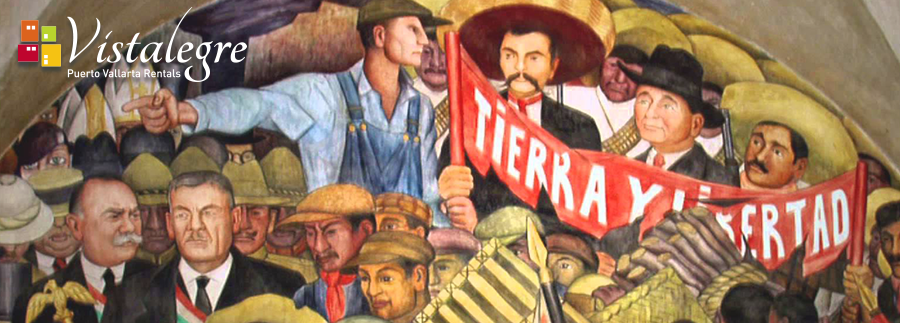
As we know Mexico is rich in beauties but in history too! Today we are talking about one major historical event who changed everything: The Mexican revolution.
At the beginning of the 20th century, the contradictions of Mexican society exploded. Bourgeois, workers and peasants emerge against the dictator Porphyry Diaz, in power for more than thirty years. To drive the insurrection is Francisco Madero, a landowner of liberal ideas who on October 7, 1910, from exile in Texas, urges Mexico to revolt. It was November 20 when things got messy.
It is a revolution populated by legendary figures, from Pancho Villa to Emiliano Zapata, but which, in ten years of war, causes more than a million deaths and becomes one of the most controversial and fascinating chapters of contemporary history. A plot of vicissitudes and characters suspended between history and legend, a turbine that upsets Mexico and drags it to a new era.
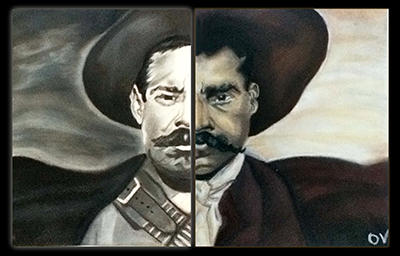
Poor peasants against the privileges of landowners and the Church
Begun in 1910, the Mexican Revolution was one of the major revolutions of the twentieth century. It lasted twenty years and had as its main goals the formation of a democratic constitutional regime and agrarian reform. He mobilized the masses of poor peasants and was very bloody
The collapse of Diaz's dictatorship and the origins of the revolution
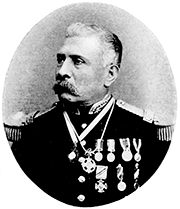 From 1876 Mexico had fallen under the authoritarian power, transformed into open dictatorship, by General Porfirio Díaz. During that time, the country had known a process of relative economic modernization, whose fruits had, however, almost exclusively benefited the high urban classes and landowners, with the exception of the masses and in particular the peasants, mostly Indios. In 1910, Francisco Madero, a wealthy progressive creole owner, called the popular masses and the most enlightened owners of the insurrection, which spread rapidly. The regime of Díaz collapsed and Madero was elected president in 1911.
From 1876 Mexico had fallen under the authoritarian power, transformed into open dictatorship, by General Porfirio Díaz. During that time, the country had known a process of relative economic modernization, whose fruits had, however, almost exclusively benefited the high urban classes and landowners, with the exception of the masses and in particular the peasants, mostly Indios. In 1910, Francisco Madero, a wealthy progressive creole owner, called the popular masses and the most enlightened owners of the insurrection, which spread rapidly. The regime of Díaz collapsed and Madero was elected president in 1911.
When the revolution broke out, Mexico had a population of around 15 million people, of whom about three-quarters lived in the countryside. Land ownership was in the hands of just over 800 large landowners and some 400,000 small and medium-sized owners, facing 12 million peons, laborers who were miserable, brutally exploited and subjected to constant violence.
Civil War
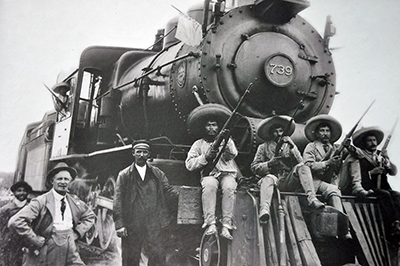 Faced with the fact that the most radical revolutionary currents, led by Emiliano Zapata, shook the specter of agrarian reform, the conservative forces led by General Victoriano Huerta murdered Madero and in 1913 occupied the capital. Against Huerta, the troops of General Venustiano Carranza and Álvaro Obregón and the irregular formations of Zapata and Francisco (Pancho) Villa defeated Huerta, who left Mexico in 1914. Carranza then formed a constitutionalist government in 1914 to give country a constitution and political freedom and to inaugurate a course of social reform. Villa and Zapata, however, continued the struggle with the goal of giving land to poor peasants. Mexico plunged into chaos. The popular masses split: while the workers supported the constitutionalists, the poor peasants followed Zapata and Villa (who would then be turned into a real bandit).
Faced with the fact that the most radical revolutionary currents, led by Emiliano Zapata, shook the specter of agrarian reform, the conservative forces led by General Victoriano Huerta murdered Madero and in 1913 occupied the capital. Against Huerta, the troops of General Venustiano Carranza and Álvaro Obregón and the irregular formations of Zapata and Francisco (Pancho) Villa defeated Huerta, who left Mexico in 1914. Carranza then formed a constitutionalist government in 1914 to give country a constitution and political freedom and to inaugurate a course of social reform. Villa and Zapata, however, continued the struggle with the goal of giving land to poor peasants. Mexico plunged into chaos. The popular masses split: while the workers supported the constitutionalists, the poor peasants followed Zapata and Villa (who would then be turned into a real bandit).
In 1917 Carranza was elected president and laid a very advanced constitution that sanctioned state secularism, civil marriage, the abolition of primary education to the Catholic Church, the nationalization of mines, the start of agrarian reform, political and civil rights , the legal nature of the unions. But that was not enough to secure inner peace. Zapata, left on radical positions, was assassinated in 1919, Carranza himself fell victim to an assassination in 1920 and Villa was in turn assassinated in 1923.
The end of the revolution and the beginning of stability
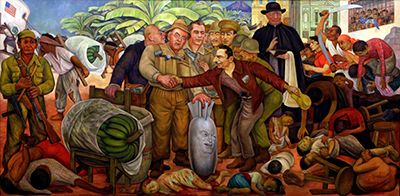 Between 1920 and 1924 the presidency was ruled by Obregón and between 1924 and 1928 by General Plutarco Elías Calles. In 1928, shortly after his re-election to president, Obregón fell under the blows of a Catholic fanatic. These presidents embarked on important political and social reforms in a climate of violent confrontation with the Catholic Church, deprived of its privileges and property. During his presidency, Calles ensured the implementation of the Constitution. Reform of education and agrarian reform aroused the reaction of Catholics and landlords, who promoted an insurrection (called cristeros) that was severely repressed. Calles also reorganized the national army and founded the Revolutionary National Party (later called the Revolutionary Institutional Party). When in 1928 he left the presidency, the Mexican Revolution could be ended.
Between 1920 and 1924 the presidency was ruled by Obregón and between 1924 and 1928 by General Plutarco Elías Calles. In 1928, shortly after his re-election to president, Obregón fell under the blows of a Catholic fanatic. These presidents embarked on important political and social reforms in a climate of violent confrontation with the Catholic Church, deprived of its privileges and property. During his presidency, Calles ensured the implementation of the Constitution. Reform of education and agrarian reform aroused the reaction of Catholics and landlords, who promoted an insurrection (called cristeros) that was severely repressed. Calles also reorganized the national army and founded the Revolutionary National Party (later called the Revolutionary Institutional Party). When in 1928 he left the presidency, the Mexican Revolution could be ended.
El Día de la Revolución is a special time made up of celebrations with music, parades, and cultural activities in cities throughout Mexico. If you are in Puerto Vallarta you don't have to miss the chance to marvel at the city all dressed up to honor its national roots and its historical identity!
Read More Blog Entries
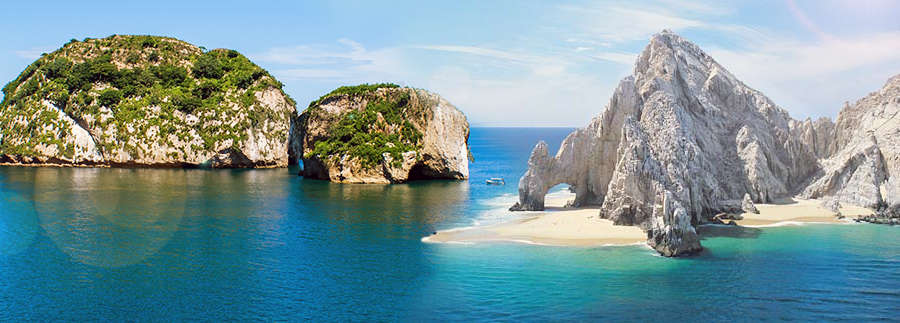
Puerto Vallarta vs. Cabo San Lucas
Both locales offer the bounteous sunshine, glimmering sands and magnificent marine backdrop that draws millions of visitors to their friendly shores every year.
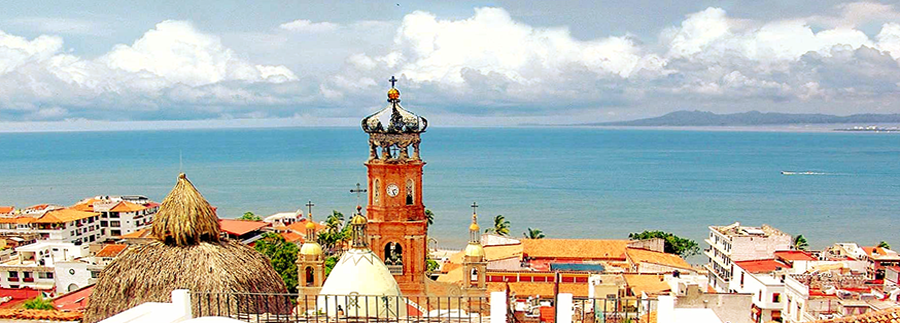
Endless summer? Weather in Puerto Vallarta
One of the most remarkable aspects of Puerto Vallarta is its unusually consistent weather...
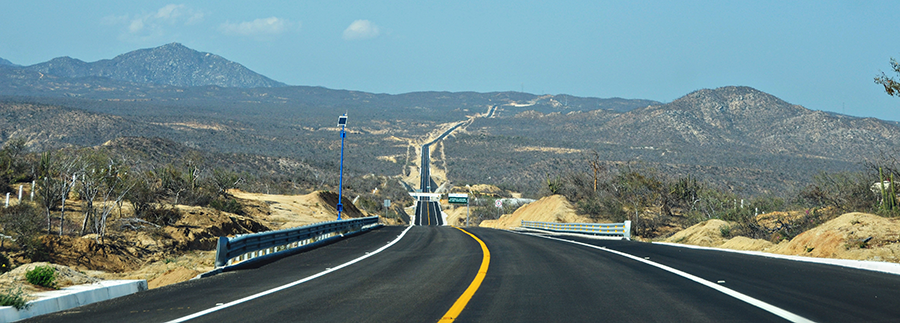
Beyond the Banderas Bay: Puerto Vallarta to Mexico City
One of the most easy to enjoy aspects of life in the Puerto Vallarta area is its easy accessibility to some of the country's major cities.
Back To Topics


